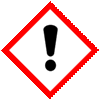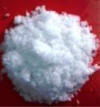| Anmol Chemicals is the pioneer manufacturers of Sodium phosphate monobasic dibasic tribasic, Pharmaceutical Excipients Fragrance & Food Flavor chemicals in India. We offer Halal and Kosher Sodium phosphate monobasic dibasic tribasic made in an ISO9001, ISO22000 (FSSC22000) cGMP and GLP certified facility. Our group has several manufacturing facilities spread across the world, supported by toll manufacturers and representatives in UAE, Europe, USA, China and has several associated manufacturing facilities spread across India. All the Information on Physics, Chemistry, Applications, Uses and Technology on Manufacture of Sodium phosphate monobasic dibasic tribasic is in these pages. |
| The units have one or more of the certifications like FDA GMP, ISO 9001, ISO 22000, HACCP, REACH, Kosher & Halal |
Sodium phosphate triobasic Trisodium Phosphate SDS GHS, MSDS Sheet
Specifications of Sodium phosphate tribasic Trisodium phosphate Manufacturers
Trisodium Phosphate MSDS Material Safety Data Sheet Sodium Phosphate Tribasic
1. Product Identification
Synonyms: Trisodium Phosphate, 12-Hydrate; Phosphoric Acid, Trisodium Salt, Dodecahydrate Tri Sodium Phosphate, Sodium Phosphate Tribasic
CAS No.: 7601-54-9 (Anhydrous) 10101-89-0 (Dodecahydrate)
EINECS EC Number: 231-509-8
Molecular Weight: 163.94 for Anhydrous and 380.12 for Dodecahydrate
Chemical Formula: Na3PO4 for Anhydrous and Na3PO4 . 12H2O for Dodecahydrate
Recommended usage: Industrial Manufacturing.
2. Hazards Identification
GHS, Globally Harmonized System Classification in accordance with 29 CFR 1910
Classification according to Regulation (EC) No 1272/2008
Skin irritation Category 2
Serious eye damage/eye irritation Category 2A
Specific target organ toxicity - single exposure, Target Organs - Respiratory system. Category 3
Labeling according Regulation (EC) No 1272/2008
| GHS Label Elements  Irritant |
Signal Words: Warning
Hazard statements:
H315: Causes skin irritation.
H319: Causes serious eye irritation.
H335: May cause respiratory irritation.
Precautionary statements:
P264: Wash … thoroughly after handling.
P280: Wear protective gloves/protective clothing/eye protection/face protection.
P302+P352: IF ON SKIN: Wash with plenty of soap and water.
P305+P351+P338: IF IN EYES: Rinse cautiously with water for several minutes. Remove contact lenses, if present and easy to do. Continue rinsing.
P332+P313: If skin irritation occurs: Get medical advice/attention.
P337+P313: If eye irritation persists: Get medical advice/ attention.
P362: Take off contaminated clothing and wash before reuse.
Classification according to EU Directives 67/548/EEC or 1999/45/EC:
Xi Irritant R36/37/38
For the full text of the H-statements and R-phrases mentioned in this Section, see Section 16.
3. Composition/Information on Ingredients
Ingredient: Sodium Phosphate Tribasic or Trisodium Phosphate or Sodium Phosphate Tribasic or Tribasic Sodium Phosphate
CAS No.: 7601-54-9
EINECS EC Number: 231-509-8
Percent: 98 - 100%
4. First Aid Measures
Inhalation: Remove to fresh air. If not breathing, give artificial respiration. If breathing is difficult, give oxygen. Get medical attention.
Ingestion: Do NOT induce vomiting. Give large amounts of water. Never give anything by mouth to an unconscious person. Get medical attention.
Skin Contact: Immediately flush skin with plenty of soap and water for at least 15 minutes. Remove contaminated clothing and shoes. Get medical attention. Wash clothing before reuse. Thoroughly clean shoes before reuse.
Eye Contact: Immediately flush eyes with plenty of water for at least 15 minutes, lifting lower and upper eyelids occasionally. Get medical attention immediately.
5. Fire Fighting Measures
Fire: Trisodium Phosphate is not considered to be a fire hazard.
Explosion: Tri Sodium Phosphate is not considered to be an explosion hazard.
Fire Extinguishing Media: Use water spray, alcohol-resistant foam, dry chemical or carbon dioxide. Use means suitable for extinguishing surrounding.
Special Information: In the event of a fire, wear full protective clothing and NIOSH-approved self-contained breathing apparatus with full face piece operated in the pressure demand or other positive pressure mode.
6. Accidental Release Measures
Ventilate area of leak or spill of Trisodium Phosphate. Wear appropriate personal protective equipment.
Spills: Sweep up and containerize for reclamation or disposal. Vacuuming or wet sweeping may be used to avoid dust dispersal. Avoid dust formation. Avoid breathing vapors, mist or gas. Do not let product enter drains. US Regulations (CERCLA) require reporting spills and releases to soil, water and air in excess of reportable quantities.
7. Handling and Storage
Keep Tri Sodium Phosphate in a tightly closed container, stored in a cool, dry, ventilated area. Protect Trisodium Phosphate against physical damage. Containers of Sodium Phosphate Tribasic may be hazardous when empty since they retain product residues (dust, solids); observe all warnings and precautions listed for the product.
8. Exposure Controls/Personal Protection
Airborne Exposure Limits: Trisodium phosphate or Tri Sodium Phosphate:
-AIHA Workplace Environmental Exposure Limit: 5 mg/m3 (15-minute STEL)
Ventilation System: A system of local and/or general exhaust is recommended to keep employee exposures below the Airborne Exposure Limits. Local exhaust ventilation is generally preferred because it can control the emissions of the contaminant at its source, preventing dispersion of it into the general work area. Please refer to the ACGIH document, Industrial Ventilation, A Manual of Recommended Practices, most recent edition, for details.
Personal Respirators (NIOSH Approved): If the exposure limit is exceeded and engineering controls are not feasible, a full face piece respirator with high efficiency particulate filter (NIOSH type N100 filter) may be worn up to 50 times the exposure limit or the maximum use concentration specified by the appropriate regulatory agency or respirator supplier, whichever is lowest. If oil particles (e.g. lubricants, cutting fluids, glycerin, etc.) are present, use a NIOSH type R or P filter. For emergencies or instances where the exposure levels are not known, use a full-face piece positive-pressure, air-supplied respirator. WARNING: Air purifying respirators do not protect workers in oxygen-deficient atmospheres.
Skin Protection: Wear impervious protective clothing, including boots, gloves, lab coat, apron or coveralls, as appropriate, to prevent skin contact.
Eye Protection: Use chemical safety goggles and/or full face shield where dusting or splashing of solutions is possible. Maintain eye wash fountain and quick-drench facilities in work area.
9. Physical and Chemical Properties
Appearance: Tri Sodium Phosphate is white crystalline solid.
Odor: Trisodium Phosphate is odorless.
Solubility: Appreciable (> 10%)
Specific Gravity: 1.62
pH: Strongly alkaline.
% Volatile by volume @ 21C (70F): 0
Boiling Point: Decomposes.
Melting Point: 73.3 - 76.7C (163 - 171F)
Vapor Density (Air=1): Not applicable.
Vapor Pressure (mm Hg): Not applicable.
Evaporation Rate (BuAc=1): No information found.
10. Stability and Reactivity
Stability: It is stable under ordinary conditions of use and storage.
Hazardous Decomposition Products: Sodium and phosphorus oxides may form when heated to decomposition.
Hazardous Polymerization: Will not occur for Tri Sodium Phosphate.
Incompatibilities: Trisodium Phosphate reacts violently with water and acids to liberate heat.
Conditions to Avoid: Heat, flames, ignition sources and incompatibles.
11. Toxicological Information
Trisodium Phosphate: Investigated as a mutagen.
Trisodium Phosphate, Dodecahydrate: 7400 mg/kg oral rat LD50.
Carcinogenicity: No component of this product present at levels greater than or equal to 0.1% is identified as probable, possible or confirmed human carcinogen by IARC NTP ACGIH OSHA.
12. Ecological Information
Environmental Fate: No information found.
Environmental Toxicity: No information found.
13. Disposal Considerations
Whatever cannot be saved for recovery or recycling should be managed in an appropriate and approved waste disposal facility. Processing, use or contamination of this product may change the waste management options. State and local disposal regulations may differ from federal disposal regulations. Dispose of container and unused Sodium Phosphate Tribasic in accordance with federal, state and local requirements.
14. Transport Information
DOT & ADR/RID: Not regulated
TDG: Not regulated
IATA: Not regulated
IMDG/IMO: Not regulated
15. Regulatory Information
USA - TSCA 12(b): No; CDTA: No
OSHA: Hazardous by definition of Hazard Communication Standard (29 CFR 1910.1200)
SARA 302: Not Listed
SARA 304: Not Listed
SARA 313: Not Listed
SARA 311/312: Acute: Yes; Chronic: Yes; Fire: No; Pressure: No, Reactivity: No (Pure / Solid)
Chemical Weapons Convention: No.
Massachusetts Right To Know Components: Sodium phosphate tribasic dodecahydrate, CAS-No. 10101-89-0
Pennsylvania Right To Know Components: Sodium phosphate tribasic dodecahydrate, CAS-No.
10101-89-0
New Jersey Right To Know Components: Sodium phosphate tribasic dodecahydrate, CAS-No.
10101-89-0
California Prop. 65 Components: This product does not contain any chemicals known to State of California to cause cancer, birth defects, or any other reproductive harm.
Canada WHMIS: CLASS E: Corrosive solid.
Australian Hazchem Code: None allocated.
Poison Schedule: None allocated.
16. Other Information
EINECS EC Number: 231-509-8
H315 = Causes skin irritation.
H319 = Causes serious eye irritation.
H335 = May cause respiratory irritation.
Xi = Irritant
R36/37/38 = Irritating to eyes, respiratory system and skin.
Safety Phrases: S1/2- Keep locked up and out of the reach of children. S26- In case of contact with eyes, rinse immediately with plenty of water and seek medical advice. S36/37- Wear suitable protective clothing and gloves. S39- Wear eye/face protection. S45- In case of accident or if you feel unwell, seek medical advice immediately
Disclaimer:
*******************************
Our company provides this Trisodium Phosphate SDS information sheet contained herein in good faith but makes no representation as to its comprehensiveness or accuracy. This Sodium Phosphate Tribasic MSDS sheet is intended only as a guide to the appropriate precautionary handling of the material by a properly trained person using this product. Individuals receiving the information must exercise their independent judgment in determining its appropriateness for a particular purpose.
*******************************
Sodium phosphate tribasic Trisodium Phosphate Manufacturers
Anmol Chemicals
S-8, SARIFA MANSION, 2ND FLANK ROAD, CHINCHBUNDER, MUMBAI 400009, INDIA
TEL: (OFFICE) 91-22-23770100, 23726950, 23774610, 23723564 - FAX: 91-22-23728264
e-mail: anmolc@mtnl.net.in

Exports to USA, Canada, UAE, Dubai, South Africa, Tanzania, Kenya, Nigeria, Egypt, Uganda, Turkey, Mexico, Brazil, Chile, Argentina, Europe Netherlands, Italy, Spain, Germany, Portugal, France, Malaysia, Indonesia, Thailand, Korea, Japan, Russia, etc.
Copyright and Usual Disclaimer is Applicable. 18 February, 2022






